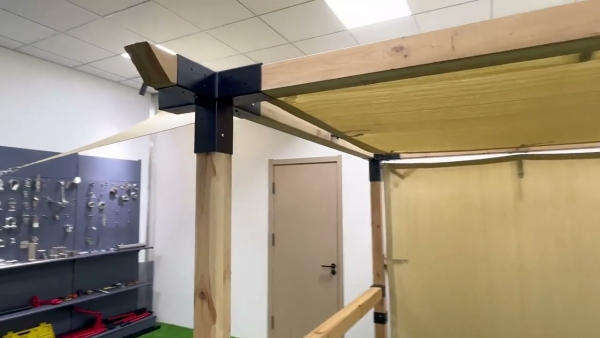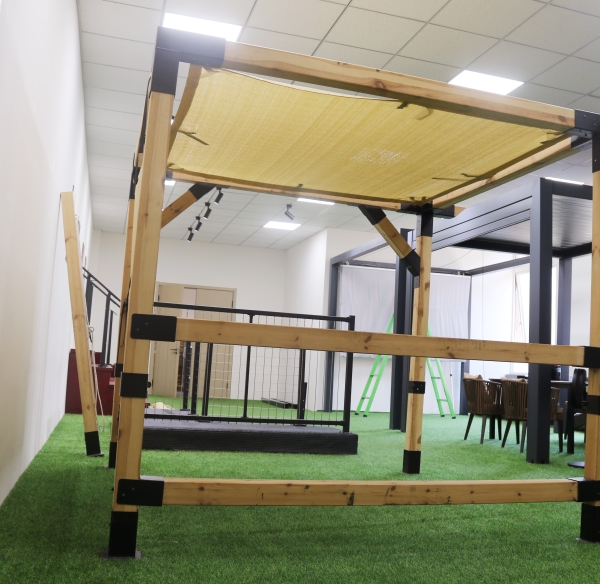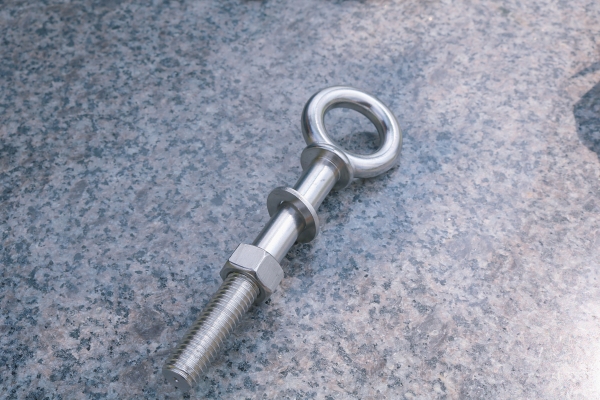Table of Contents
Simple DIY Steps for Building a Basic Pergola
Pergolas are a popular addition to outdoor spaces, providing shade and a sense of enclosure while still allowing for an open-air feel. While some pergolas can be complex and time-consuming to build, there are simpler designs that are easier for DIY enthusiasts to tackle. In this article, we will discuss the easiest pergola to build, outlining the basic steps and materials needed to complete the project.

One of the simplest pergola designs is a basic rectangular structure with four posts and a slatted roof. This design is straightforward to construct and requires minimal carpentry skills. To begin, you will need to gather the necessary materials, including pressure-treated lumber for the posts and beams, as well as cedar or redwood for the slats. You will also need concrete mix, screws, and a drill.
The first step in building a basic pergola is to mark out the location of the posts. Use a tape measure and stakes to determine the dimensions of the pergola, ensuring that it is level and square. Dig holes for the posts using a post hole digger, making sure they are deep enough to support the structure. Pour concrete into the holes and set the posts in place, using a level to ensure they are plumb.
Once the posts are in place, you can begin attaching the beams. Cut the beams to size and secure them to the tops of the posts using screws. Be sure to check for level and adjust as needed. Next, cut the slats to length and attach them to the beams, spacing them evenly apart. You can choose to leave the slats flat or angle them for a more decorative look.
As you work through the construction process, be sure to take your time and double-check your measurements. It is important to ensure that the pergola is structurally sound and will withstand the elements. Once the basic structure is complete, you can add finishing touches such as stain or paint to protect the wood and enhance its appearance.
In conclusion, building a basic pergola is a manageable project for DIY enthusiasts with basic carpentry skills. By following these simple steps and using the right materials, you can create a beautiful outdoor structure that will enhance your outdoor living space. Remember to take your time, double-check your measurements, and enjoy the process of building your own pergola. With a little effort and patience, you can create a functional and attractive addition to your backyard that will provide years of enjoyment.
Budget-Friendly Materials for Constructing an Easy Pergola
When it comes to constructing a pergola, choosing the right materials can make all the difference in terms of ease of construction and overall cost. In this article, we will explore some of the easiest and most budget-friendly materials for building a pergola.
One of the simplest and most cost-effective materials for constructing a pergola is pressure-treated lumber. Pressure-treated lumber is treated with chemicals that make it resistant to rot, decay, and insect damage, making it an ideal choice for outdoor structures like pergolas. Additionally, pressure-treated lumber is readily available at most home improvement stores and is relatively easy to work with, making it a popular choice for DIY pergola projects.
Another budget-friendly material for building a pergola is cedar. Cedar is a durable and naturally rot-resistant wood that is well-suited for outdoor applications. While cedar may be slightly more expensive than pressure-treated lumber, it is still a cost-effective option for building a pergola. Cedar is also lightweight and easy to work with, making it a great choice for DIY projects.
For those looking for a more modern and low-maintenance option, vinyl pergolas are another easy and budget-friendly choice. Vinyl pergolas are made from durable PVC material that is resistant to rot, decay, and insect damage. Additionally, vinyl pergolas require minimal maintenance and can be easily cleaned with soap and water. While vinyl pergolas may be slightly more expensive than wood pergolas, they offer long-term savings in terms of maintenance and upkeep.
If you are looking for a budget-friendly option that requires minimal maintenance, aluminum pergolas are another great choice. Aluminum pergolas are lightweight, durable, and resistant to rust and corrosion, making them an ideal choice for outdoor structures. Additionally, aluminum pergolas are available in a variety of styles and colors, making it easy to find a design that complements your outdoor space.
In addition to choosing the right materials, there are a few other factors to consider when building a pergola. One important consideration is the size and layout of your pergola. A smaller pergola will be easier and less expensive to build than a larger pergola, so it is important to carefully plan the size and layout of your pergola before beginning construction.
Another important factor to consider is the location of your pergola. It is important to choose a level and stable location for your pergola, as this will make the construction process much easier. Additionally, it is important to check with your local building codes and regulations before building a pergola, as there may be restrictions on the size, height, and location of outdoor structures in your area.
In conclusion, building a pergola can be a fun and rewarding DIY project, especially when using the right materials. By choosing budget-friendly materials like pressure-treated lumber, cedar, vinyl, or aluminum, you can easily construct a pergola that is both easy to build and cost-effective. With careful planning and attention to detail, you can create a beautiful outdoor space that will provide years of enjoyment for you and your family.







